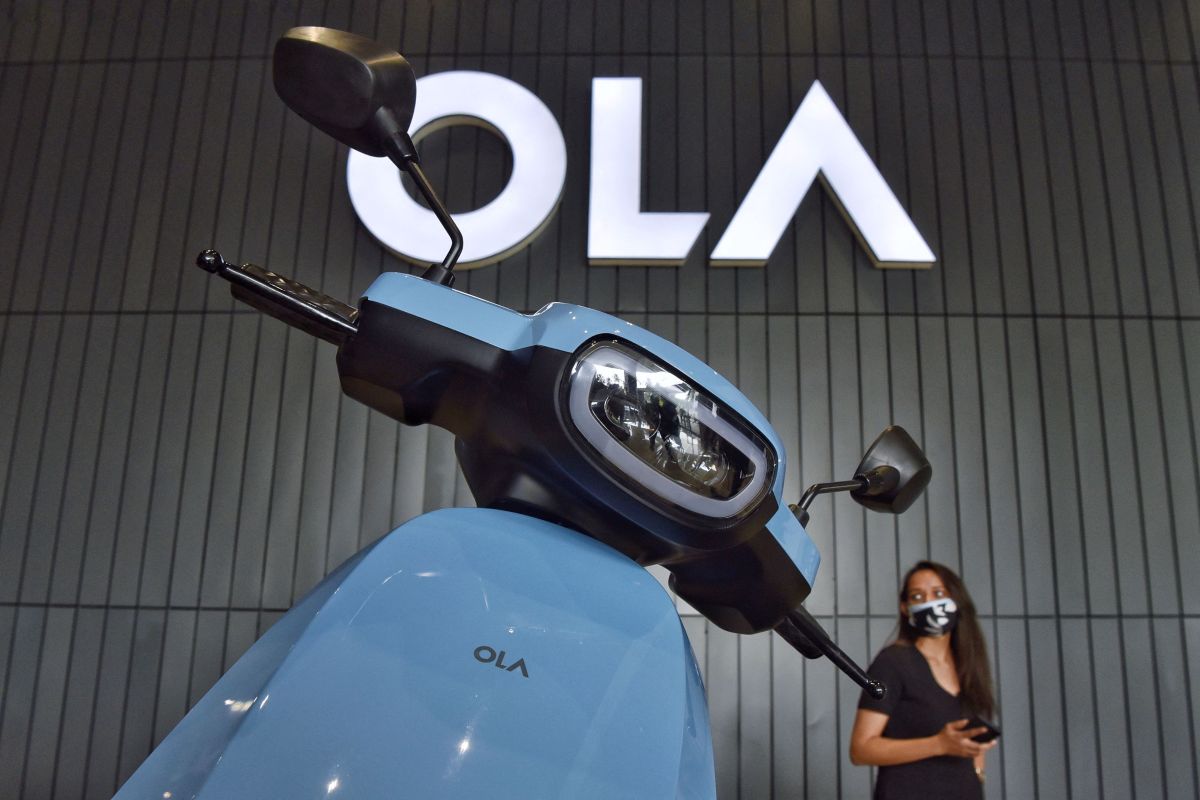Ola Electric, India’s largest electric two-wheeler maker, saw its shares rise as much as 20% on its public debut on Friday, making it the biggest listing among Indian firms in two years.
Shares of the Bengaluru-based firm, which counts SoftBank and Temasek among its backers, jumped to as high as ₹91.18 (about $1.1) after starting to trade at ₹76, the higher end of its IPO price range. The company filed to go public at a valuation that was 26% lower than the $5.4 billion it achieved in a funding round in October 2023, and significantly below the $6.5 billion to $8 billion range it had initially targeted for the IPO.
The stock is currently trading at ₹90, which gives Ola Electric a market capitalization of $4.75 billion.
Ola Electric has emerged as the dominant player in India’s electric two-wheeler market, enjoying 46% share in the sector. Ola launched its first electric scooter in December 2021 and has sold more than 330,000 units in the financial year ended March 2024.
The company is not yet profitable, however. It reported net loss of ₹16 billion (about $200.5 million) and EBITDA loss of ₹13 billion (about $162.8 million) on annual revenue of ₹50 billion (about $626.3 million) in its last financial year.
The company has been investing in vertical integration to better control quality, supply and costs — it has initiatives to develop its own battery cell technology as well as build manufacturing capabilities. It plans to expand capacity to 20GWh by the second quarter of 2026.
The electric vehicle market in India is poised for substantial growth. Investment banking and research firm Macquarie expects electric two-wheelers to gradually increase their share of the two-wheeler market in the country, estimating market penetration rates of 7%, 10%, 13%, and 16% for the fiscal years 2025, 2026, 2027, and 2028, respectively.
That differs quite a bit from Ola Electric’s much more optimistic forecast for electric two-wheelers: In its IPO prospectus, the company expects the category to reach 41%-56% market share by fiscal year 2028.
Recent reductions in government subsidies for electric two-wheelers have impacted the sector’s growth trajectory. Still, the Indian electric vehicle market has seen some consolidation — the Herfindahl-Hirschman Index (HHI), a measure of market concentration, has risen to 2,810 as of June 2024 from from 1,200-1,330 in fiscal years 2022-2023. That’s higher than the 2,160 number for traditional two-wheelers that run on internal combustion engines.

